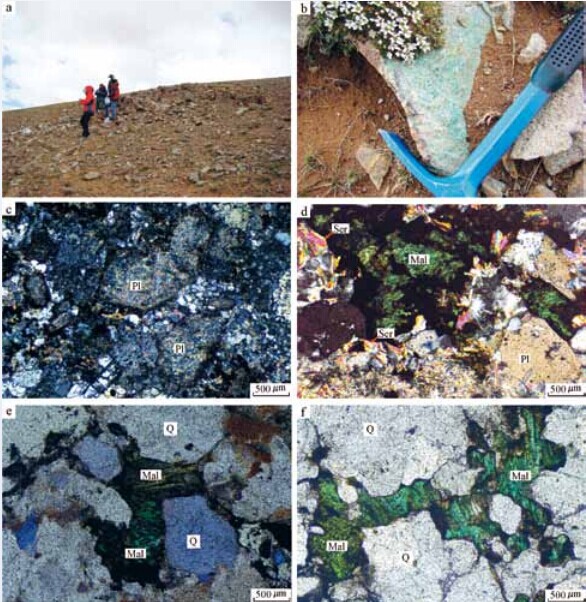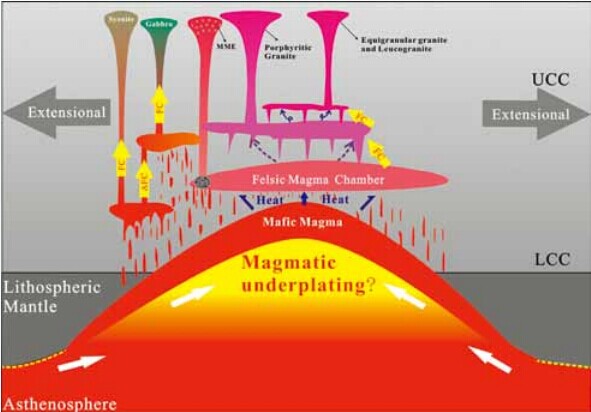Research Institutes
Major Research Achievements
Major Research Achievements Of 2013
(1) Marine fossils discovered in the upper part of the Late Permian Linxi Formation in the
Xingmeng area: The study shows that the Xingmeng area in Inner Mongolia had a marine or primarily
marine sedimentary environment even until the Late Permian. This finding gives new and reliable
evidence for identifying the eventual close of the Xingmeng sea basin and would facilitate adjustment of
the thoughts and deployment of exploration for ordinary oil-gas, shale gas (oil) and other metallic and
nonmetallic ores in Late Permian strata in the Xingmeng area.
(2) A discovery in ore prospecting: The Xiongmei porphyry copper deposit was found in the BangongNujiang
suture zone in Tibet, which has potential to become a large-sized ore deposit. This could
promote our understanding for mineral exploration in the Tibet area.

Outcrop and Cu mineralization of ore-bearing porphyry of the Xiongmei copper deposit
(3) New understanding regarding the super-large Gejiu Sn-Cu polymetallic deposit in Yunnan: Research revealed that mineralization and contemporaneous magmatism bear a close genetic relationship in the concentrated area of tin-polymetallic deposits in the study area. This deposit was considered to have a magmatic-hydrothermal genesis rather than syngenesis.

A diagram showing the deep background and process of the Late Cretaceous diagenesis
and metallogenesis in the western part of South China
(4) Metallogenic process of W-Mo-Cu deposits related to Caledonian granodiorite-porphyry in the Dayaoshan area: The study pointed out that there occur a series of porphyry-skarn-quarte vein type W-Mo-Cu ore deposits related to Caledonian granodiorite-porphyry in the Dayaoshan area in Guangxi.

